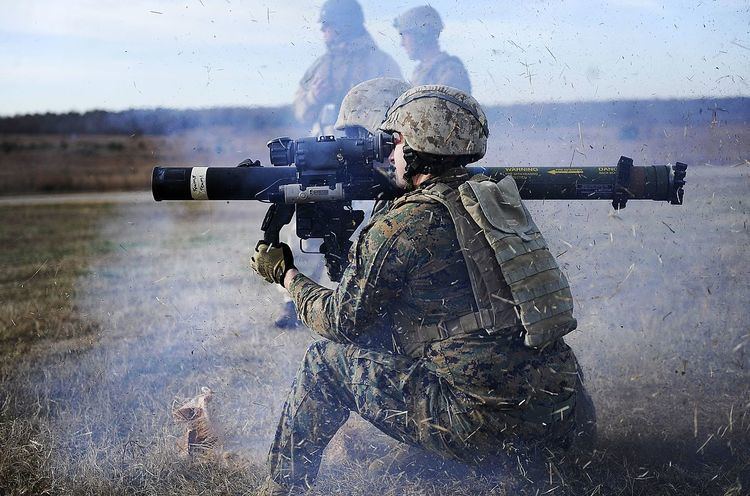Type Anti-fortification In service 1999–Present Designer McDonnell-Douglas | Used by See Operators | |
 | ||
Wars War in Afghanistan (2001-present), Iraq War | ||
The M141 Bunker Defeat Munition (BDM), or SMAW-D ("Disposable"), is a single-shot, shoulder-launched weapon designed to defeat hardened structures. The weapon was designed as a modification of the United States Marine Corps Shoulder-launched Multipurpose Assault Weapon (SMAW) to fill the void in the United States Army inventory of a "bunker buster" weapon.
Contents
Service history
Two candidates were evaluated for the US Army's BDM program. One candidate from McDonnell-Douglas (later Talley Defense Systems) which used the same warhead as the Marine Corps SMAW, but with a rocket motor with a shorter burn time, and another developed by Sweden's FFV for Alliant Techsystems (later Honeywell), which replaced the standard HEAT warhead of the AT4/M136 with the same warhead dual purpose warhead as used by the USMC SMAW. FFV designated the bunker buster version of the AT4 the FFV AT8. In 1996 the McDonnell-Douglas candidate was chosen. In a unique move, the US Army ordered one batch of 1,500 then a second batch of 4,500 which were placed in contingency storage for expedited issue to units in combat. The SMAW-D was delivered to the Army in 1999.
The conferees of the National Defense Authorization Act for Fiscal Year 1994 agreed that the Army's BDM and the Marine Corps' SRAW were too similar to justify separate long-term projects, and that the Army should pursue an interim BDM program. Congress limited BDM procurement to 6,000 units.
CNN news footage showed US Army Rangers firing M141s at various fortified caves during the Tora Bora operations against the Afghan Taliban and al Qaeda, being mistaken by the CNN reporters for AT4/M136 projectiles.
Design
The SMAW-D operates on the principle of a recoilless rifle, in that the recoil created by launching the projectile is counteracted by a "backblast" of gases fired from the rear of the weapon. This makes the SMAW-D inherently dangerous, especially in confined, urban areas, as is with all weapons of this design.
The M141 has two configurations: A carry mode in which the launcher is 810 mm (32 in) long, and a ready to fire mode in which the launcher is extended to its full length of 1,400 mm (55 in).
The warhead is the same High Explosive, Dual Purpose (HEDP) as the USMC SMAW. It is effective against masonry and concrete bunkers as well as lightly armored vehicles. The projectile is capable of penetrating up to 200 mm (8 in) of concrete, 300 mm (12 in) of brick, or 2.1 m (6.9 ft) of sandbags. The warhead is activated by a crush switch in its nose that is able to distinguish between hard and soft targets. On soft targets, such as sandbags, the detonation is delayed until the projectile is buried in the target, producing a devastating effect. The warhead detonates immediately on contact with hard targets.
